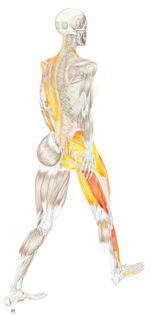
The concept of using movement to floss the connective tissue that surrounds nerves is not new.
Let’s open the lens beyond nerve flossing and look at how other aspects of our structure benefits from flossing as well.
Tissue Flossing/Pulping:
This is movement that specifically targets fascial compartments. Co-activation of functional opposites creates spirals in the fascial compartments. This effectively wrings out the tissues like wringing a wash cloth. The benefits of pulping the structure are many. Releasing residual muscle tension, squeezing and soaking the tissues in fluid exchange, restoring elasticity in the tissues, and muscular integration are important aspects of pulping.
Joint Flossing:
Joint articulation or joint mobility also has many benefits. Joint mobility is not passive. There is the co-activation present though not as intense as in pulping. The intention is to move the structure through its complete range of motion in a smooth, controlled, pain-free manner. Each joint has its unique attributes in movement. The Functional Compass™ – as outlined in Applied Anatomy for Yoga Therapeutics – provides a map for movement potential.
One distinct quality of joint flossing is working on the capacity to isolate movement to a targeted joint. This develops the individual building blocks of movement. When we have motor control of the individual building blocks of movement, these building blocks can then be assembled into larger integrated movements.
The nervous system will always look for the most efficient way to accomplish movement. The more choices that are available, translates into more options for efficiency. Also, when movement deviates in a changing environment, the nervous system can then maintain a safety valve with all the options available. The nervous system knows which movement options are available and which ones are not. The nervous system will always devise a way to work around movement options that are not available. This is a fundamental of maladaptive compensation.
Benefits of joint flossing; Joint articulations:
– renew synovial fluid in the joint capsule.
– disperse joint salts and metabolic by products.
– are a beneficial stimulation for the nervous system.
– develop the building blocks of movement.
– stimulate mechanoreceptors.
– cue the nervous system for the available building blocks of movement.
– are a form of active recovery.
– prime the nervous system for work load.
Something to consider:
In real life, there are no warm-ups. When the demands of a changing environment requires response, either the capacity to respond appropriately is available or not. Only during our training time do we have the luxury of warming-up and skill development. While it may seem pedestrian to practice joint mobility as a regular aspect of your training program, I can say as an aging athlete, it is fundamental to maintaining healthy structure and movement.